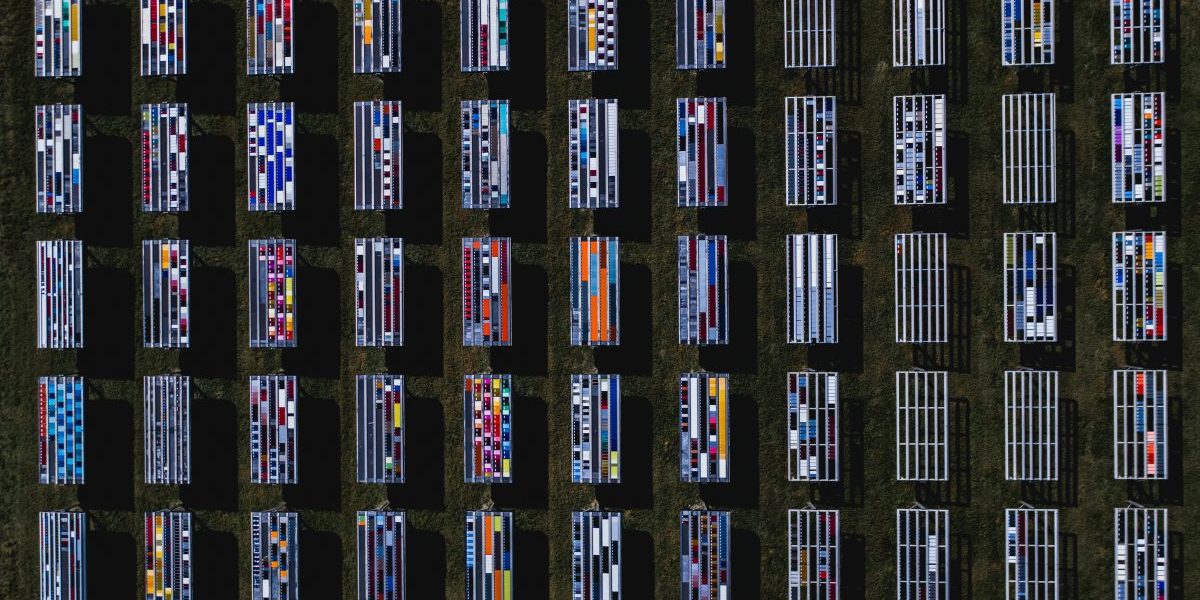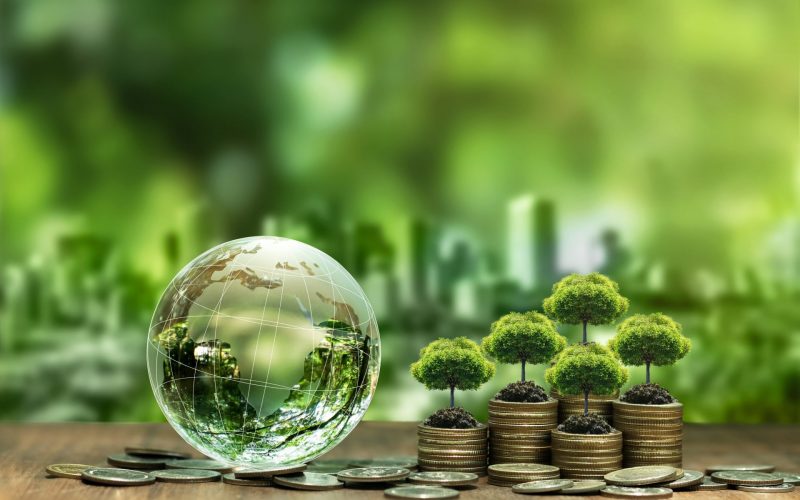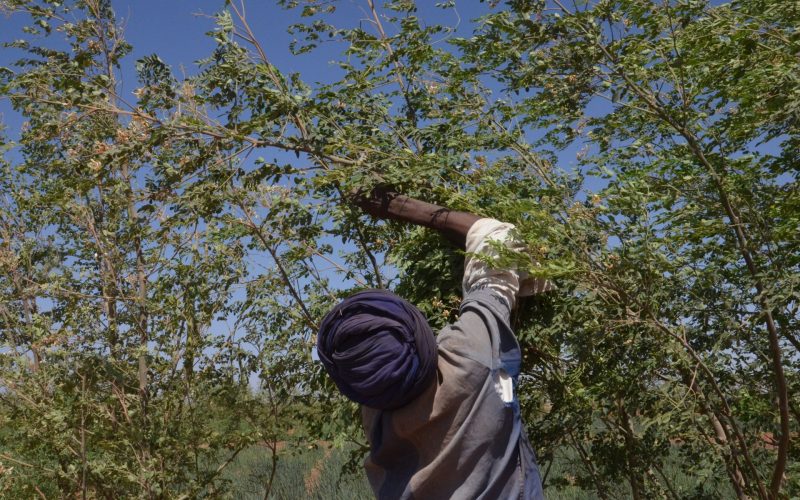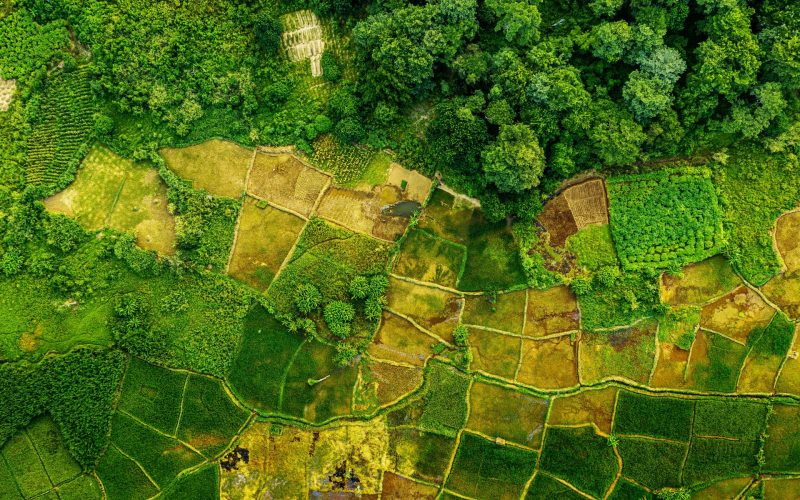Recommendations:
- African policymakers need to prioritise the development and deployment of renewable and sustainable energy as an engine of social and economic development.
- While the Africa Energy Guarantee Facility (AEGF) is a step in the right direction to mitigate investment risks for renewable energy and promote private investment in the sector in Africa, African policy makers need to create an enabling environment and appropriate regulatory and institutional frameworks to complement its benefits.
- Going forward, African and European policymakers need to promote reforms that facilitate foreign direct investment and technical exchanges in climate-resilient infrastructure and renewable energy between Africa and Europe.
- The AEGF comes at a time when AU-EU cooperation is responding to changes in the global development agenda. Hence, both regions should build on this achievement to promote investment in other strategic areas.
Executive summary
The AU-EU partnership has evolved over the past few years. In line with the global development agenda, the EU has placed climate change and environmental sustainability at the heart of its development policies. The EU’s policies towards Africa are also rapidly changing to incorporate the green economy as a basis for structural economic transformation in the continent. In this light, this brief assesses the prospects and challenges of the Africa Energy Guarantee Facility (AEGF), a newly launched European Investment Bank risk mitigation instrument for sustainable energy projects in Africa. The brief argues that the facility possesses significant opportunities for economic cooperation and development for both Africa and Europe. It will leverage the EU’s position as the largest investor in Africa and encourage private investment in Africa’s renewable energy sector, while also supporting the development of the continent’s financial sector.
Evolution of Africa-European Union (EU) Partnership
The Africa-EU Partnership1AU, ‘The Africa-EU Partnership’, https://africa-eu-partnership.org/en/partnership-and-joint-africa-eustrategy#:~:text=The%20Africa%2DEU%20Partnership%20is,Africa%2DEU%20Summit%20in%20Cairo.launched in 2000 was established as a formal political channel through which Europe and Africa can engage in policy dialogue and work together with a view to promoting the socio-economic, political and development interests of both regions. The partnership seeks to promote collaboration on issues of common interest such as trade and regional integration, democracy, governance and human rights, peace and security, migration, science and technology transfer, the Sustainable Development Goals and energy and climate change. The partnership represents an effort to shift the relationship between the regions from a donor-recipient relationship towards a relationship based on long-term economic, institutional and political cooperation.
The new European Consensus on Development, the EU’s Circular Economy Action Plan, and the EU’s Green New Deal, have prioritised responding to climate change, promoting environmental sustainability and supporting a green transition. These priorities are also reflected in the EU’s Comprehensive Strategy with Africa. The strategy recognises the need to partner with Africa to address the economic, political, social, technological, demographic, climate and environmental challenges facing the continent.2European Commission, Joint Communication to the European Parliament and the Council: Towards a comprehensive Strategy with Africa, JOIN (2020) 4 (Brussels: European Commission, 2020), https://op.europa.eu/en/publication-detail/-/publication/55817dfb-61eb-11ea-b735-01aa75ed71a1/language-en..Green transition and energy access, which is one of the five pillars of the strategy, seeks to unlock Africa’s potential to rapidly transition towards a green and circular economy, encompassing various dimensions including sustainable energy, food systems and smart cities.
Africa’s energy access challenge and investment needs
Improving access to energy through mass deployment of clean and sustainable energy is critical to achieving robust, inclusive and sustainable socio-economic, political and human development in Africa, while mitigating climate change and promoting a clean environment. The continent has the lowest levels of electricity access in the world. According to the 2017 Energy Access Outlook3International Energy Agency (IEA) Energy Access Outlook 2017: From Poverty to Prosperity. World Energy Outlook pecial Report (Paris, IEA: 2017)., the average electrification rate in the continent in 2016 stood at 52%, with wide divergence between urban (77%) and rural (32%) areas. This translates to 588 million Africans lacking access to electricity. The electrification rate in Africa is far lower than other developing regions. There are also significant variations in electricity access within the continent. Countries in North Africa have achieved almost 100% electricity access while those in sub-Saharan Africa have only managed to achieve 43%.
The continent’s economic and development challenges are closely tied to the limited electricity access. Lack of reliable electricity access contributes to low economic productivity and growth, and high poverty and unemployment rates in Africa.4Hadi Salehi Esfahani and Maria Teresa Ramirez, ‘Institutions, Infrastructure and Economic Growth,’ Journal of Development Economics 70, no. 2 (April 2003): 443-77; Iza Lejarraga, “Beyond the Financial Crisis: Critical Factors Binding Economic Growth. A Survey of African Growth Diagnostics” (paper, African Economic Conference, UN Conference Center, Addis Ababa, Ethiopia, November 11-13, 2009).This is also linked to broader social and political problems such as violent crimes and terrorism, human and drug trafficking, political instability and civil unrest.5Ronald Helms and Steve Costanza, ‘Energy Inequality and Instrumental Violence: An Empirical Test of a Deductive Hypothesis,’ SAGE Open 4, no. 2 (April-June 2014): 1-16; Robert Strauss Center for International Security and Law, Energy and Security: Developments in the Energy Field and Questions of International Security (Austin: The University of Austin at Texas), https://www.strausscenter.org/energy-and-security-project/energy-poverty/.High poverty, unemployment and lack of economic development opportunities in Africa equally pose socio-economic and security challenges for Europe, as evidenced by the recent spikes in irregular and illegal migration from Africa. Addressing the energy access problem in Africa can promote economic development and opportunities for Africans and support the attainment of the objectives of the AU-EU partnership.
One of the major challenges facing the energy sector in Africa is a lack of financing and investment.6Anton Eberhard, Katharine Gratwick, Elvira Morella and Pedro Antmann, Independent Power Projects in Sub-Saharan Africa: Lessons from Five Key Countries (Washington, DC: Directions in Development: Energy and Mining, The World Bank, 2016), https://openknowledge.worldbank.org/bitstream/handle/10986/23970/9781464808005.pdf?sequence=2&isAllowed=yAnalysis by the International Energy Agency (IEA) reveals that $39 billion worth of annual investment is needed between 2015 and 2030 to achieve about 850 terawatt-hours of electricity generation annually in sub-Saharan Africa.7Ryan Hogarth, Unlocking Private Investment in Renewable Power in Sub-Saharan Africa, briefing document (Oxford: Oxford Policy Management, 2017) https://www.gov.uk/dfid-research-outputs/unlocking-private-investment-in-renewable-power-in-subsaharan-africa.Public finances are insufficient to meet the investment needs of the sector, suggesting that private investment and financing are required to achieve universal energy access in the region. However, the limited capacity of Africa’s financial sector and the high risk profiles of energy investments in the region pose challenges to private investment and financing.8Nicola Bilotta and Lorenzo Colantoni, “Financing Energy Access in sub-Saharan Africa” (IAI Papers 18/22, Instituto Affari Internazionali, Rome, 2018), https://www.iai.it/sites/default/files/iaip1822.pdf.Energy investors face difficulties accessing financing due to high investment risks, including political and sovereign risks. Mitigating the risks associated with energy investments, especially noncommercial risks, is therefore critical for attracting private and foreign investment to Africa’s energy sector.
The EU’s new risk mitigation instrument for energy projects in Africa
Over the years, the EU and Africa have strengthened cooperation in the areas of energy access and security. Several initiatives have been developed in this regard, such as the AU-EU partnership. In 2018, the European Investment Bank (EIB) launched the AEGF to support private investment and financing in the energy sector in Africa, in line with EU policy objectives. The AEGF is the product of a collaboration between the EIB, Munich Reinsurance, and the African Trade Insurance Agency (ATI), and is a dedicated risk-sharing facility to support the development of sustainable energy infrastructure in Africa. The facility aims to enhance access to private financing by providing investment insurance for energy projects in Africa. It provides investment insurance against breach of contract, currency inconvertibility, sovereign or sub-sovereign non-payment under a power purchase agreement, expropriation, arbitration award default, political instability, civil unrest and war.9European Investment Bank, ‘First Long-Tenor Political Risk Insurance to unlock US$1.4 billion Clean Energy Investment across Africa,’ press release no. 2018-068-EN, March 20, 2018, https://www.eib.org/en/press/all/2018-068-first-long-tenor-political-riskinsurance-to-unlock-usd-1-4-billion-clean-energy-investment-across-africa.The first projects to benefit from its risk mitigation were expected by the end of 201910EU-Africa Infrastructure Trust Fund, ‘Africa Energy Guarantee Fund (AEGF), http://www.eu-africa-infrastructure-tf.net/activities/grants/africa-energy-guarantee-fund-aegf.htm.
Projects under the AEGF must meet the EU’s criteria for sustainable energy projects11‘Implementation Guidelines for EU SE4All funding,’ African Trade Insurance Agency, Nairobi, Kenya, http://www.ati-aca.org/wpcontent/uploads/2017/09/SE4All-EU-Guidelines.pdf. This includes projects that sustainably improve the availability and quality of modern energy services, access to electricity, rural and urban electrification, sustainable cooking, energy efficiency and renewable energy. The projects need to be financially viable and sustainable, and demonstrate strong developmental impacts in terms of poverty reduction, social and economic development and equal access and opportunities for all, while minimising environmental impacts. Thus, the energy projects facilitated by the AEGF will contribute to and support the attainment of the objectives of the SDGs, the Paris Agreement, and the EU’s Comprehensive Strategy with Africa.
The AEGF presents significant opportunities for economic cooperation and development between Africa and Europe. The facility focuses on access to finance, climate-resilient infrastructure, renewable energy, private sector-led investment initiatives, and inclusive economic growth and job creation, which are at the core of the new EU strategy with Africa.12European Commission, Joint Communication to the European Parliament and the Council: Towards a comprehensive Strategy with Africa, JOIN (2020) 4 (Brussels: European Commission, 2020), https://op.europa.eu/en/publication-detail/-/publication/55817dfb-61eb-11ea-b735-01aa75ed71a1/language-en.It leverages EU’s position as the largest investor in Africa and encourages private investors and renewable energy companies from Europe and elsewhere to invest in the renewable energy sector in Africa. By mitigating potential risks associated with energy projects in Africa, the AEGF seeks to deepen trade and investment in clean energy and related infrastructure between the regions, in line with the broader goal of enhanced trade cooperation, climate change mitigation and sustainable development.
The AEGF also has the potential to support the development of the financial sector in Africa, and is poised to engender deeper collaboration between the financial systems of Europe and Africa. A distinct feature of the facility is that it leverages the expertise and coverage of the ATI while also enhancing its technical capacity. ATI, an African-based and African-focused institution, is the primary insurer responsible for business development as well as performing the initial underwriting due diligence on individual policies. Munich Reinsurance, a Germany-based private re-insurance company, will reinsure ATI for some of its sustainable energy for all eligible businesses.
By facilitating an integrated private sector-led financing mechanism, the AEGF holds significant opportunities for collaboration between Africa and the EU in the development of clean and sustainable energy. The facility enables both regions to align varied financing options to support the development of sustainable energy infrastructure. Considering the vulnerabilities of African countries to the effects of climate change, investing in clean and sustainable energy is an effective strategy to promote economic development while mitigating climate change, and at the same time creating opportunities for lesson-sharing in managing a socially-just transition to green energy.
Challenges still lie ahead
Despite the potential of the AEGF to stimulate private investment and financing for sustainable energy projects in Africa, a number of factors may limit the capabilities of the facility to promote investments at the envisioned scale. Risk mitigation instruments like the AEGF are rarely used by private investors and represents a smaller share of the development finance portfolio.13Nancy Lee, “Billions to Trillions? Issue on the Role of Development Banks in Mobilizing Private Finance” (Essays, Center for Global Development, Washington, DC, 2017), https://www.cgdev.org/publication/billions-trillions-issues-role-development-banks-mobilizing-private-finance.A recent survey of blended finance deals also shows that only 12% of blended finance deals involve a guarantee or insurance instrument14Business and Sustainable Development Commission, and Convergence, “The State of Blended Finance” (Working Paper, Business and Sustainable Development Commission, London, 2017), http://s3.amazonaws.com/awsbsdc/BSDC_and_Convergence__The_State_of_Blended_Finance__July_2017.pdf., and only 4% of infrastructure risk-mitigation instruments by international financial institutions are allocated to renewable energy projects.15International Renewable Energy Agency (IRENA), Unlocking Renewable Energy Investment: The Role of Risk Mitigation and Structured Finance (Abu Dhabi: International Renewable Energy Agency, 2016).
The AEGF is expected to support $1.4 billion of new clean energy investment across Africa16‘Africa Energy Guarantee Facility to unlock $1.4bn clean energy investments in Africa, ’ Energy Mix Report, March 27, 2018, https://www.energymixreport.com/africa-energy-guarantee-facility-unlock-1-4bn-clean-energy-investments-africa/., but two years after its launch the first sets of projects are yet to come online.17The first set of projects under the AEGF are under negotiations and would likely enter financial closure by the end of 2020.The facility may be limited in catalysing sufficient private investment in Africa for a number of reasons. The first is the high cost of risk mitigation instruments like the AEGF. Guarantees and investment insurance are less used than other financing instruments because the lower borrowing costs induced by the instruments are offset by higher transaction costs and fees.18Chris Humphrey and Annalisa Prizzon, “Guarantees for Development: A Review of Multilateral Development Bank Operations” (Research Report, Overseas Development Institute, London, 2014), https://www.odi.org/sites/odi.org.uk/files/odi-assets/publicationsopinion-files/9398.pdf.The charges are perceived to be expensive by investors and sovereign borrowers. To enhance the adoption of the AEGF by energy investors, the beneficial financing terms offered by the instruments must be greater than the transaction costs and fees.
Another reason why the AEGF’s capabilities to stimulate private investment and financing for energy projects in Africa may be limited is because of the partial risk coverage of the instrument. The AEGF, like other investment insurance and guarantee instruments, partially covers only political risks or credit risks in order to prevent moral hazard on the part of the investors. But financial institutions may still have reservations about the uncovered risks, as well as concerns about difficulties in evaluating the uncovered risks and the pricing of partial coverage. In addition, despite the availability of several instruments to cover political risks, the probability and severity of losses is not easily quantifiable, and it is difficult to predict when they might occur.19Kathryn Gordon, “Investment Guarantees and Political Risk Insurance: Institutions, Incentives and Development” (OECD Investment Policy Perspectives 2008, Organisation for Economic Cooperation and Development, Paris, 2008), https://www.oecd.org/finance/insurance/44230805.pdf.
Lack of adequate awareness about the AEGF among energy investors may also undermine the ability of the instrument to foster investment in the energy sector in Africa. The International Renewable Energy Agency noted that there is low demand for risk mitigation instruments in developing countries.20IRENA, “Unlocking Renewable Energy Investment”.This is in addition to the lack of financial or administrative capacities by investors to manage the application and long negotiation processes, which further discourages their use.
Conclusion
The AEGF has the potential to facilitate private investment in the renewable energy sector in Africa, and also deepen trade and investments in renewable energy and financial sector integration between Africa and Europe. But the objectives of the facility may be undermined by high cost, concerns over uncovered risks, and low demand from investors. It is imperative for African countries to prioritise the development and deployment of renewable energy, and initiate appropriate supporting policies. The AEGF is critical in this regard, but African policymakers need to create an enabling environment and appropriate regulatory and institutional frameworks to complement its benefits. In addition, reforms to promote foreign direct investment and technical exchanges in climate-resilient infrastructure and renewable energy between Africa and Europe should be undertaken. Finally, Africa and Europe should leverage the possibilities of the AEGF to promote investment in other areas of mutual interests.
Acknowledgement
This policy briefing has been published as part of a series under the project Partnership for a Green Transition and Energy Access: Strategic priorities for Africa and Europe. The project is a partnership between SAIIA and the Konrad Adenauer Stiftung’s Regional Programme on Energy Security and Climate Change in Sub-Saharan Africa.







